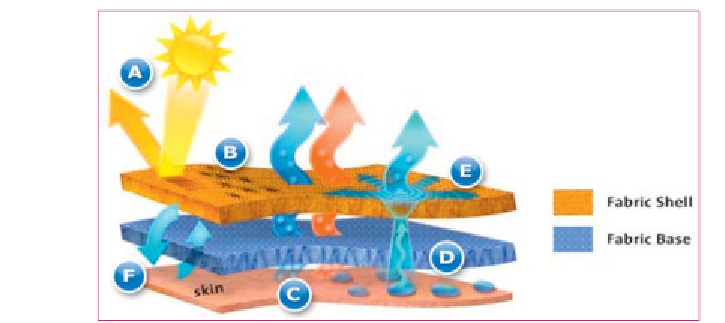Information Technology Reference
In-Depth Information
Figure 8.4
Apparel companies like AK Apparel, which has invented fabric
technology for a wide range of materials through technology based on layering
fabrics with shells and bases that perform different functions including UV
protection, anti-microbial, temperature management moisture transfer, moisture
wicking and ventilation, are proving that technology could support the aesthetic
beauty and appeal of luxury apparel
from the body to the outer layer of the fabric where it can quickly evaporate;
moisture wicking, which uses surface moisture and sweat wick to acceler-
ate evaporation, keeping the body dry while aiding in the regulation of its
temperature; and ventilation, which infuses fresh air, free from bacteria into
the body through vapours created by body moisture exit. This may sound too
fantastic to be true or may be perceived as unsuitable to luxury products but
the technology that has led to these innovations may also be applied across
various fabric types.
Technologically supported materials enhance the functionality of luxury
apparel, which in turn complements their aesthetics, and increases their
appeal. The materials may also be used as a source of enticement for a new
segment of consumers that are either driven by sports activities, well-being
or by technological innovation. Moreover, applied technology in fabrics can
easily be integrated in organic materials through mixing and layering dif-
ferent types of fabrics that could create an appealing output. In addition to
enabling clients overcome the stereotype that organic materials are drab and
unappealing, this move could also lead luxury brands to endear themselves
to a new generation of socially-conscious luxury clients.
Store merchandizing through innovation and
interactive screening
The grand opening of Giorgio Armani's multi-million dollar Manhattan store
in February 2009 - right in the middle of the global recession - drew the kind


